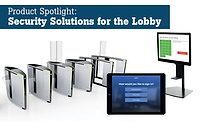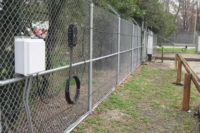Guest sign-in books add a quaint touch to a lobby’s front desk, but they are also an inefficient way to keep track of the people spending time in the building. Handwriting is often illegible. The books get moved. People sign in but don’t sign out, or sometimes they manage to sneak past the sign-in process all together. And if there is an emergency that required building evacuation, will someone remember to grab the book so everyone inside the building can be accounted for?
You don’t want to just know who is in the building but why they are there, how they got in and even details of packages that are delivered. Old-fashioned methods of paper log books and have a security person check ID badges don’t work any longer. Buildings and businesses of all sizes are considering electronic or computerized visitor management options. Plaza South Association in Fort Lauderdale, Fla., made the switch from all handwritten entry logs to a computerized tracking system. With more than 20,000 visitors a year, plus the delivery of thousands of packages and home improvement needs, the board of the 336-unit complex was no longer comfortable with the old method of keeping track of who or what was in the buildings. Instead, they wanted a system that would provide another level of security for residents.
“We were computerizing other areas of the complex,” says Sue Blalock of the Plaza South Association, “so it was an easy decision to move to an automated system of recording access of visitors, contractors, and delivery persons.”
For Blalock, the best solution to security management was a lobby management system. Now, she says, staff can track not only who comes in and out of the buildings, but where they are parked, who is borrowing equipment owned by the complex, and what building work contractors have access to. The system even has its own version of the “Do Not Fly” list – names of people who aren’t allowed any access into the facility. “We’ll have residents tell us there are people they don’t want on the property or at their residence,” says Blalock. That data is entered into the computer system and an alert pops up if the person requests entry.
The software can also restrict visitors who might not be on a watch list and track not just who but why visitors are entering a facility. If the visitor needs to sign a non-disclosure document or if a contractor is required to take a safety test, this information can be monitored through the management system.






